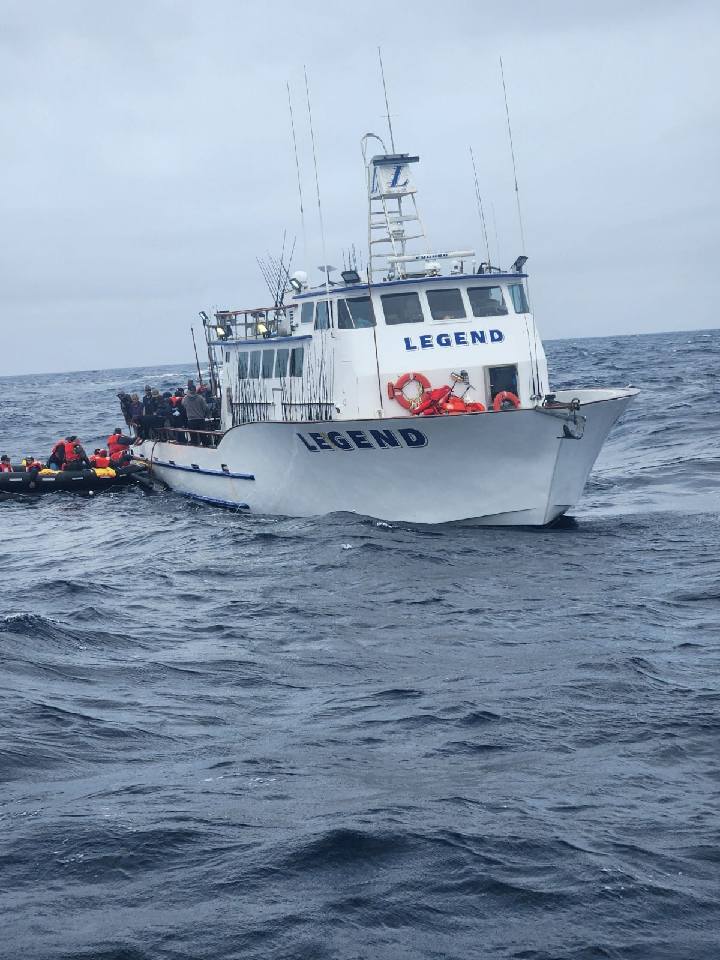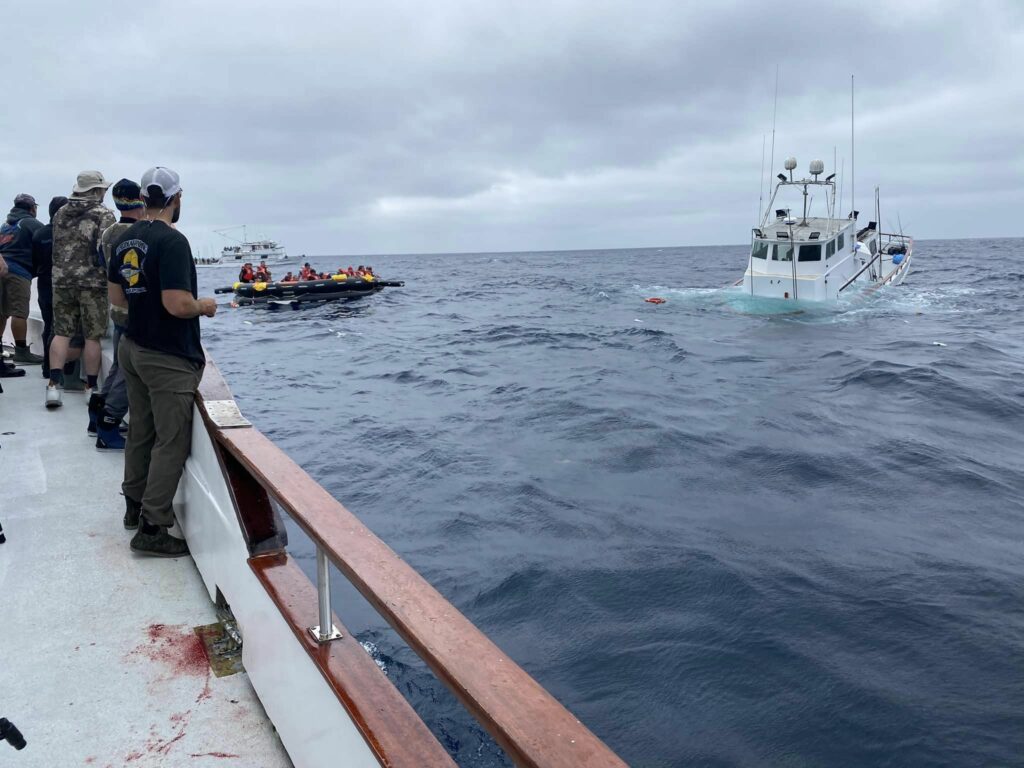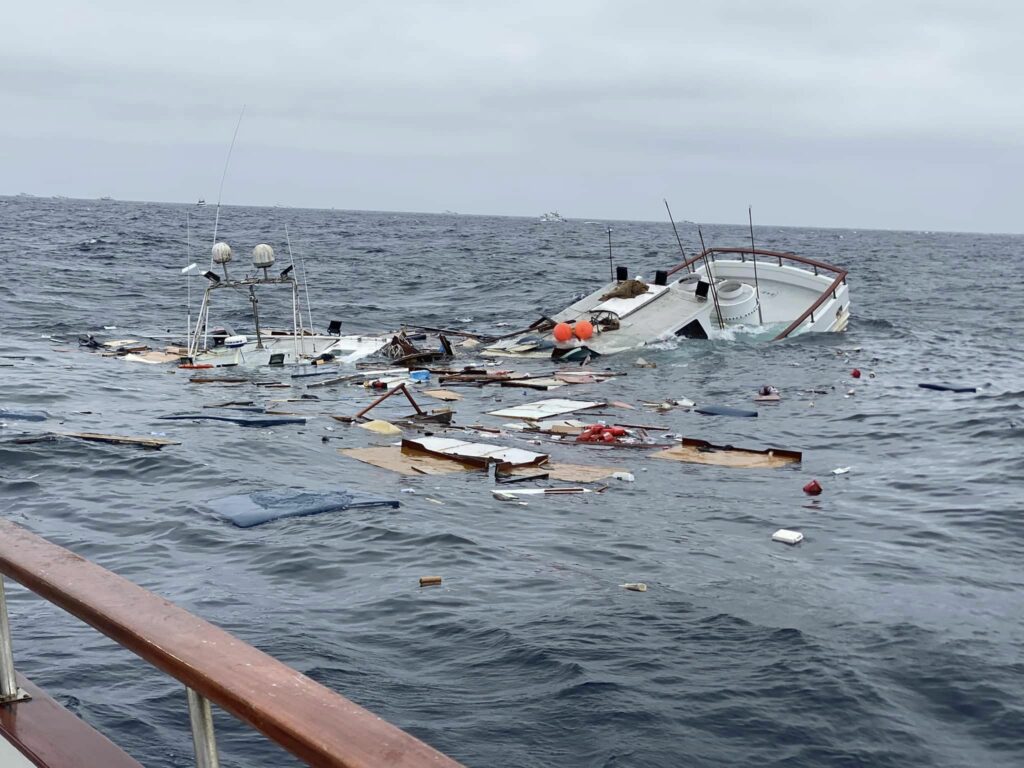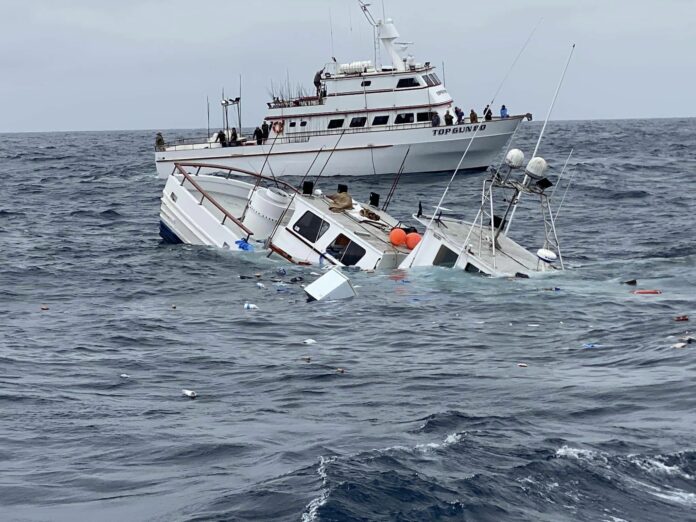SAN DIEGO – MAYDAY…MAYDAY…MAYDAY…when those words come over the radio, at sea, and over one hundred miles offshore, things happen fast, if they don’t, there’s a good chance that people will die.
The Pride arrived on the bank shortly after 8 a.m., by 10 we were in a solid bluefin bite, and those who had suffered the pounding night ride offshore had finally emerged to a gloomy, windy and equally bumpy morning. The front that was expected much later in the day appeared to have arrived early. The winds had freshened and there was a solid three-foot chop on the 4- to 5-foot running sea. Not an entirely bad morning, but one that was rough enough to demand your attention when moving about the boat or fighting a fish.
At approximately 10:43 a.m. on the Pride, it was announced, “get your gear in everybody…now! We have a mayday! Jig Strike has lost her bow and is sinking fast! Five minutes later, the anchor was up, all lines were in and the crew was methodically preparing the boat for what would come next: throwing lines were coiled at the cleats, fender buoys were tied bow, stern and amidships, and the captain was smoke holing towards the unfolding potential disaster.
The Islander and Legend were the first vessels to arrive on scene and Legend assumed the responsibility of rescuing the crew and passengers. She held within 50 yards of the sinking vessel, and the captain was directing other boats as they arrived. The crew of Legend passed a line to a 65-person life raft, and the rescued crew and passengers were quickly offloaded.
The Pride was one of the earlier boats to arrive and by that time, the Islander, Top Gun 80 and at least one private vessel had closed on the accident site and were standing by to assist.
As the Pride approached Jig Strike, she was already low in the water. Waves washed across what remained of the bow and had already reached the lower edge of the wheelhouse windows. Segments of the bow, the life raft canister, pillows from the bunk room and unused lifejackets made up the most identifiable elements of the debris field, a testament to the violence that had occurred.

On the radio, the responding vessels discussed next steps. The idea of salvage was brought up. Thousands of dollars of fishing equipment and personal items of both the passengers and crew remained onboard. After a short discussion it was determined that such an action would be far too dangerous for anyone who boarded the sinking vessel.
Within 30 minutes the waves had all but covered the wheelhouse, but the foundering vessel refused to succumb. Water and fuel tanks, the watertight bulkheads of the engine room and other various spaces within the hull held air and were keeping her afloat. As the Legend released the standby vessels, the Jig Strike continued to fight, but by now water and waves washed entirely across what could be seen of the wheelhouse, galley and the aft deck to the bait tank. The vessel continued to fight for several hours but was eventually lost.

Accidents of this type are extremely rare. Data from 5 years of U.S. Coast Guard boating statistics places hull failure, machinery or equipment failure at 18 of 30 contributing factors. Collision with an unknown object doesn’t even make the list. Of the 350 commercially registered charter fishing vessels in California, no statistics on collisions with an unknown object were found, further demonstrating the uniqueness of such accidents.
The fleet is there when accidents do occur. When the accident occurred, there were over a dozen vessels within a 10-mile radius. The closest vessels responded immediately and were onsite within minutes. The remaining vessels that were out of range for immediate support all responded and remained on standby until released.
It is a tragedy to see such a well-known vessel lost from the fleet, but it should be reassuring for all who venture offshore, that the fleet will be there when you need them most!





